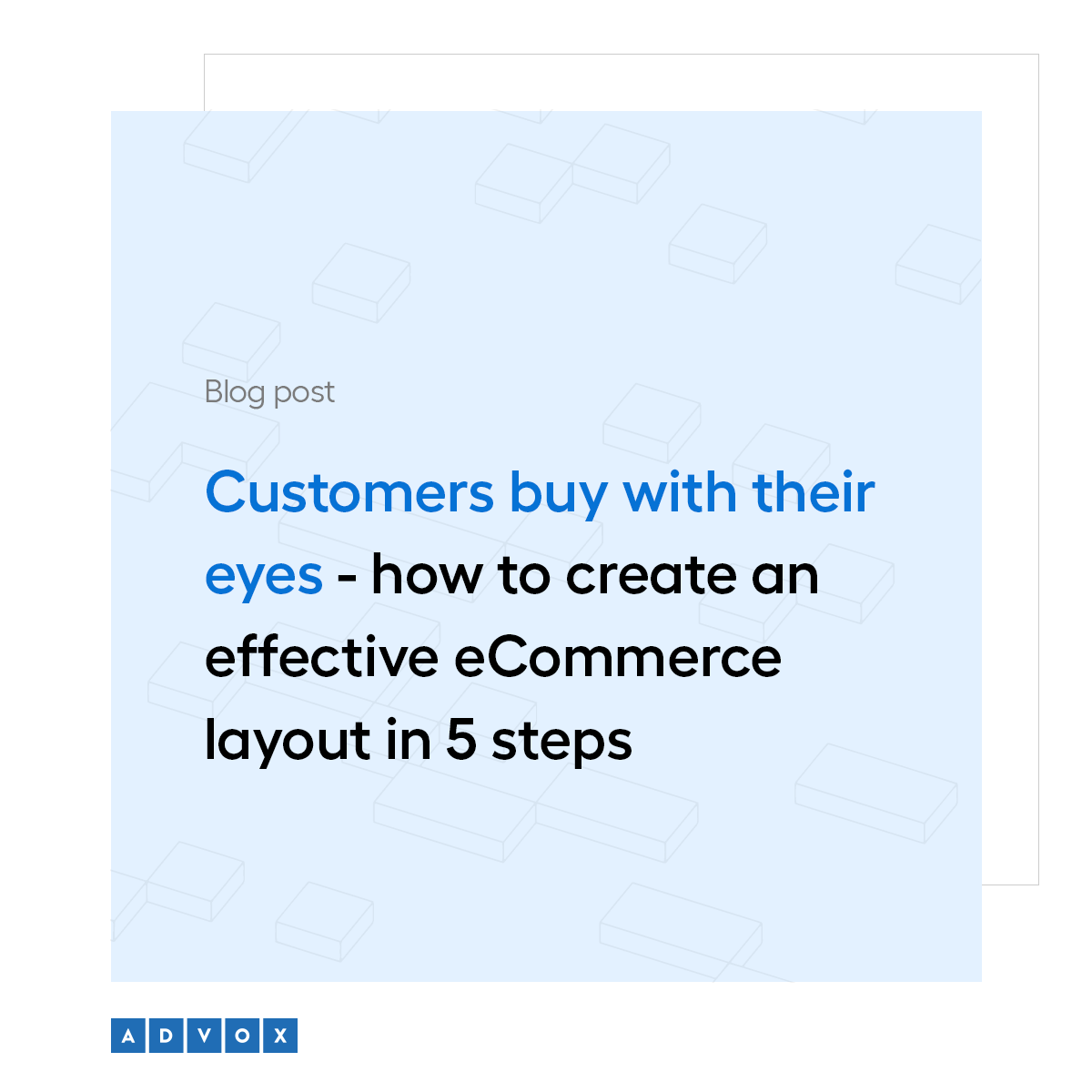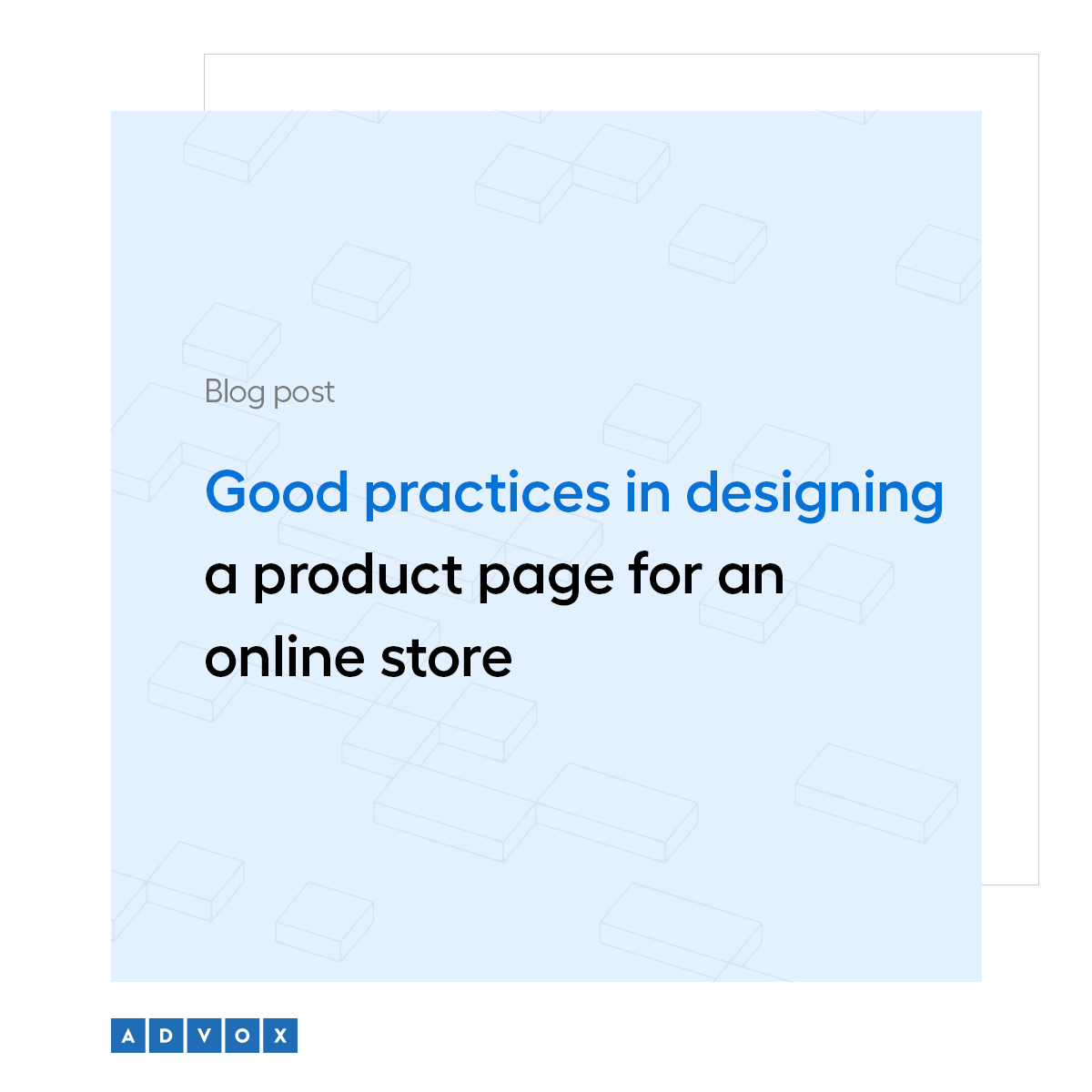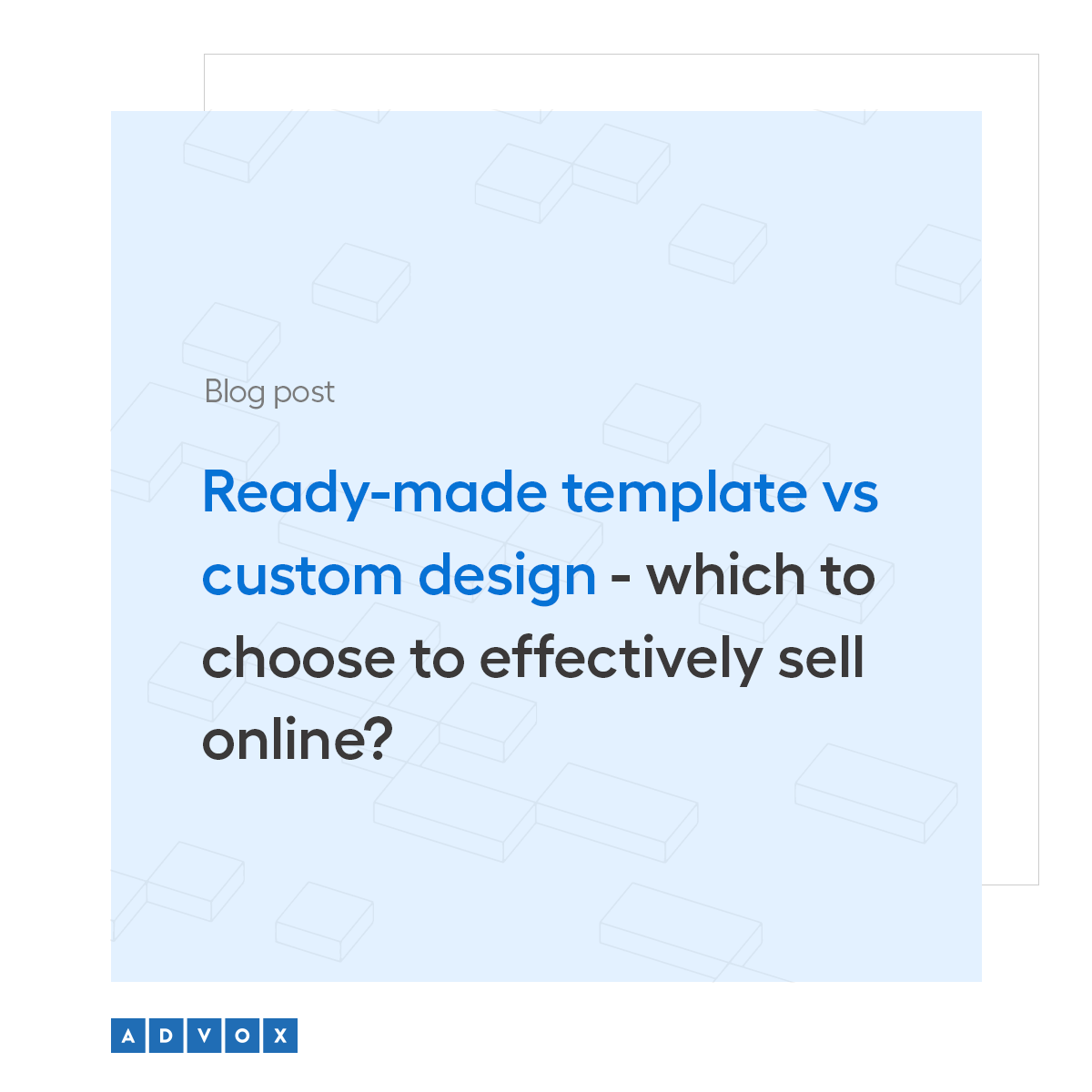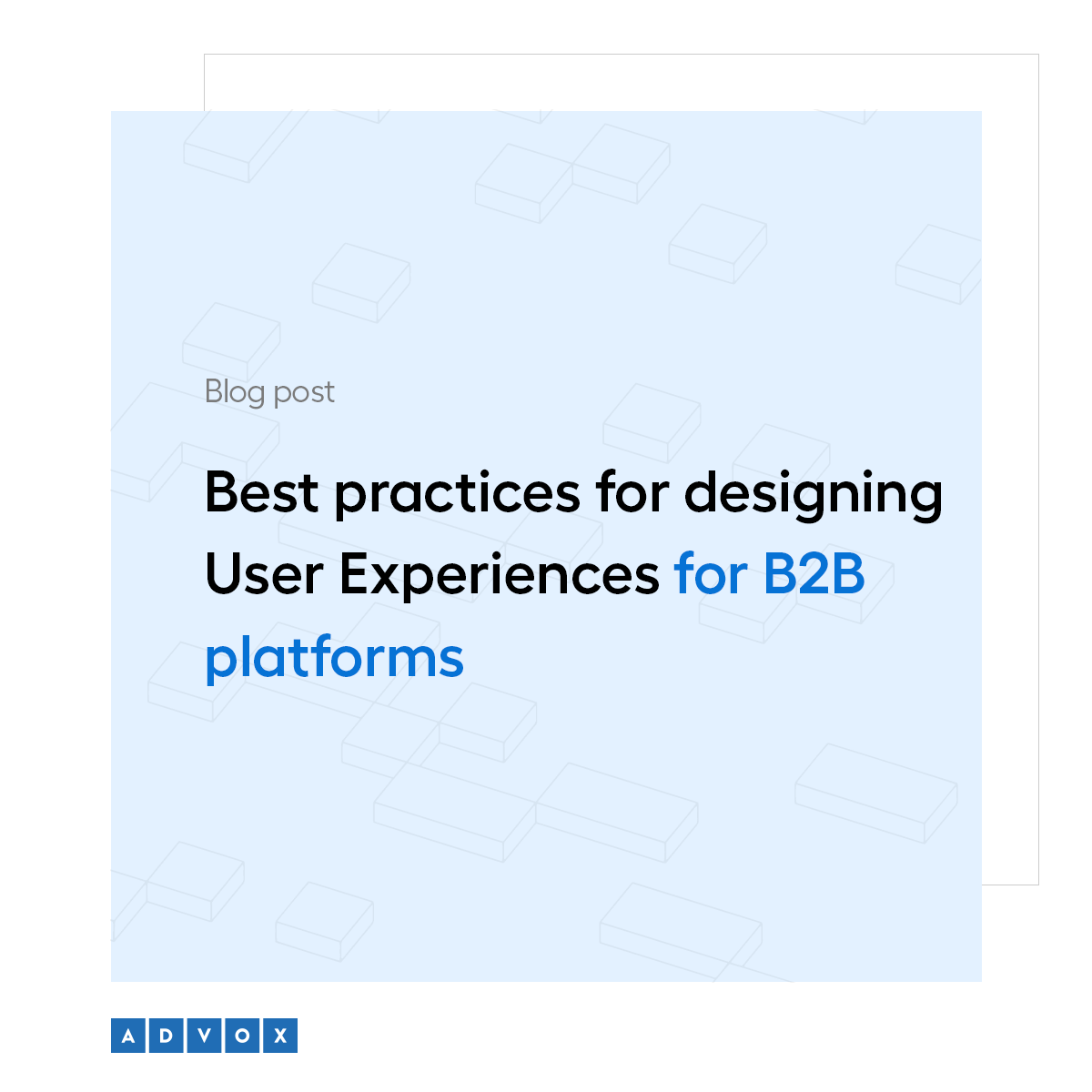Table of contents
- When is it worth opting for an online store template?
- When does an online store template limit?
- Limited customization options
- Limited flexibility
- Limited scalability
- Alternatives to a ready-made online store template
- Choose the best solution for your online store
A template for an online store is a pre-prepared base on which you can build your own eCommerce platform. This approach significantly shortens the process of designing an online store and enables a quicker entry into the market. However, there is often a belief that a ready-made template, due to its standardised form, may be a limitation for online entrepreneurs - is this true? Although an online store template may work for many entrepreneurs, there are cases where it may limit business growth or inaccurately reflect its assumptions. Find out which group you belong to - whether a template is the solution for you, or if you should opt for an alternative? In this article, we will help you make this choice.
When is it worth opting for an online store template?
A ready-made online store template is a solution that many entrepreneurs, especially those starting out online, opt for. Why do they choose such a solution? The template provides ready-made elements (e.g., layout, page and subpage layout, navigation menu) designed to meet eCommerce needs. This significantly simplifies the platform implementation process, resulting in time and budget savings (compared to the resources required to implement a site "from scratch"). As a result, choosing a ready-made eCommerce template can be a business strategy that enables a quick start, minimising costs and risks associated with launching and running an online business.
When does an online store template limit?
Templates for online stores are developed according to standardized user expectations so that as many entrepreneurs as possible can benefit from them. Therefore, if you are considering custom solutions, advanced functionalities, or expanding your business model (e.g., entering new markets), it may turn out that your needs exceed the capabilities offered within the template framework. Learn about the 3 most common cases where such a scenario may occur.
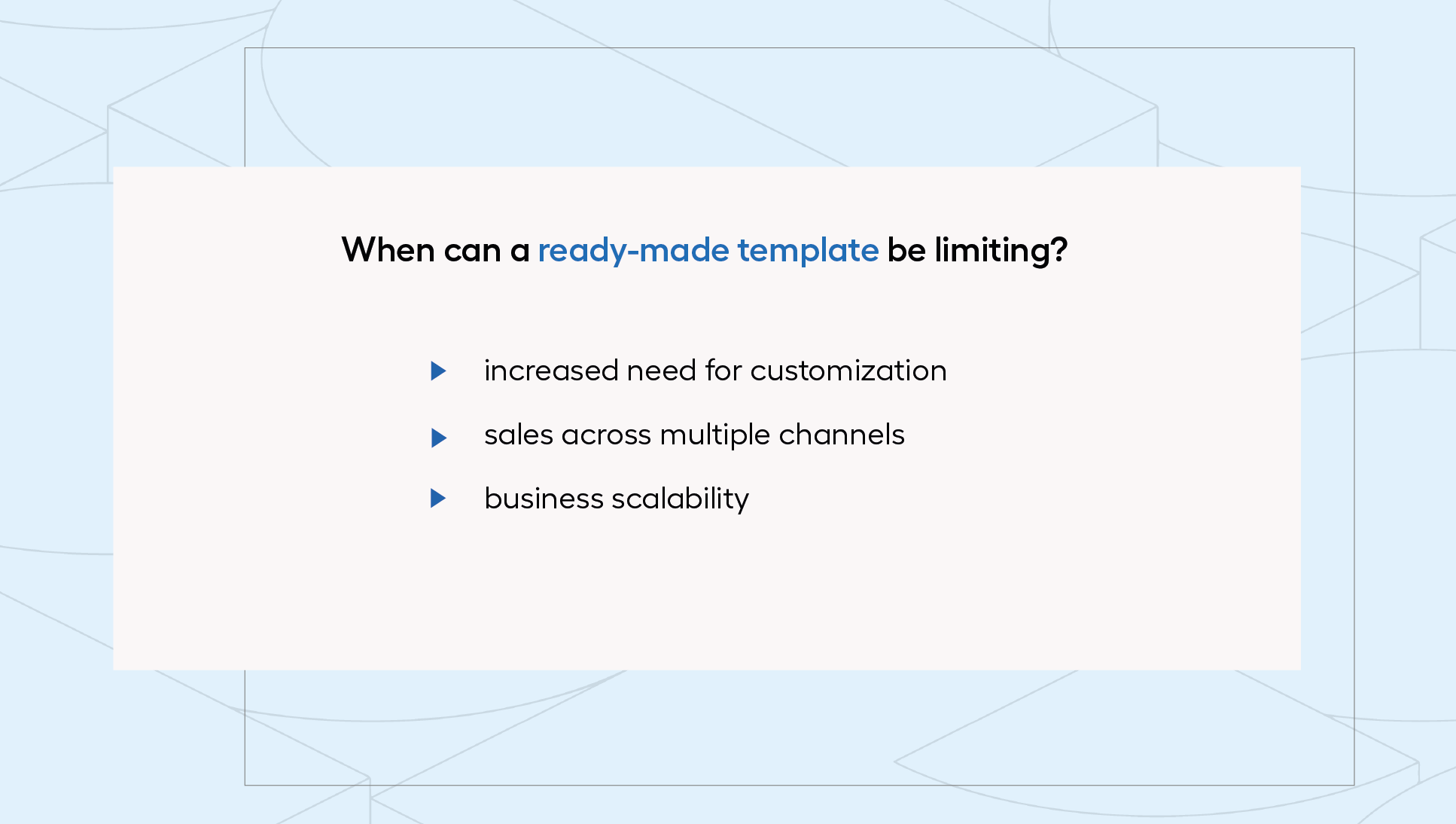
When you prioritise uniqueness - limited customization options
The decision to implement a sales platform template does not necessarily mean that you are "condemned" to a pre-imposed site appearance. There is the possibility of modifying templates, although only to a certain extent. Most templates allow, among other things: adjusting colours, font types, and layout of individual sections on the site. For some online businesses, such changes may be entirely sufficient. However, if you are considering creating a unique brand image (e.g., because you operate in a highly competitive market or your company's values are a differentiator), the template may prove inadequate.
A predefined site pattern may hinder or even prevent the implementation of custom solutions. Limitations may arise, for example, when attempting to implement custom animations, attention-grabbing visual elements, or the need to customize the appearance of the shopping cart, order fulfillment process, or product filtering. In such situations, the template may limit the possibilities of designing more personalized interactions and content presentations in a way that fully reflects the unique character of the brand.
Best practices for designing B2B platforms
Most templates, both paid and free, are designed with responsiveness in mind, i.e., ensuring proper display of the site on various devices. However, it's important to remember that responsiveness alone does not guarantee that the mobile version of the platform meets usability and performance standards for users of mobile devices. If being present across multiple channels is important to you (which is becoming an industry standard), more detailed adaptation of the user interface may be necessary, including optimising navigation or page layout for touch devices.

Remember that even if the basic version of the site on the template is sufficient, taking a step further, i.e., creating a mobile version of the store, may require the use of custom design solutions. These, in turn, will allow full control over the layout creation process and ensure a satisfactory experience for users of mobile devices and smartphones, which nearly 80% of online shoppers use (according to the Gemius report entitled "e-Commerce w Polsce 2023").
When planning to enter new markets - limited scalability
If you plan to scale your business, such as expanding into foreign markets or expanding your product offering, consider that the template's capabilities may be exhausted at some point. As online business grows, more complex functionalities will be needed. Additional elements such as additional pages and subpages or more flexible content management may be necessary. When expanding into foreign markets, it may also be necessary to adapt the site to different languages and cultures.
Additionally, a growing number of customers typically generates greater loads on the site, so it's important for the platform to be efficient and maintain smooth operation even with increased site traffic. Over time, the development of an online company may also require integration with external systems (such as WMS, PIM, or ERP), which may be difficult to achieve on a ready-made template. Often, it may turn out that a ready-made template is not designed with additional integrations in mind, requiring additional work and adaptation to the new environment.
Therefore, to effectively develop your online business and meet the growing demands of the market and customers, it may be necessary to switch to custom solutions that will provide full control and flexibility in adapting the platform to business needs and changing market conditions.
Alternatives to a ready-made online store template
The primary alternative to a template is a custom eCommerce store design. However, deciding to design a platform from scratch requires preparation for entirely different challenges. Such a process is primarily more time-consuming and requires the involvement of various specialists - from UX designers, through programmers, to testers - which is also associated with higher costs. However, the benefit for the increased effort is full customization of both the appearance and functionality of the platform.
However, it's worth noting that a custom project is not the only solution allowing you to go beyond the template - there are also intermediate solutions. One such method is Strapi CMS, a Content Management System whose capabilities go beyond the standard functionalities of such platforms. It allows, for example, the quick creation of websites (both more complex online stores and simple websites, e.g., image pages). Since the system is based on open-source code, it allows for any customization of the project to suit your needs. Strapi CMS can, therefore, be an attractive option for entrepreneurs who want to go beyond the template framework of online stores but do not plan to invest in a custom project.
Choose the best solution for your online store
Have you been discouraged from implementing an online store on a ready-made template, or on the contrary - have you heard that it's the best solution? The decision regarding the method of implementing the platform should be tailored to the specifics of your business and its goals. In the case of more advanced needs, such as greater customization, expansion into new markets, or integration with external systems, ready-made templates may prove insufficient. In such situations, it's worth considering more advanced solutions, such as custom projects. If you're not sure which solution is best for you, we'd be happy to advise you!
